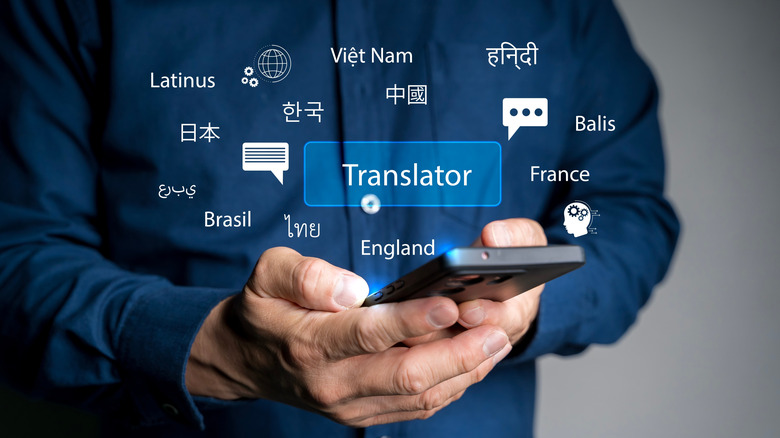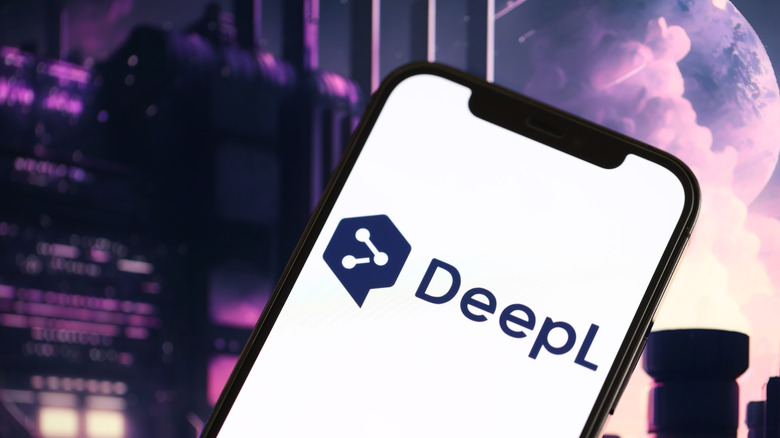Travelers To Europe Say This AI Service Is Way More Natural Sounding Than Google Translate
Every day, hundreds of millions of people fire up the Google Translate app. They use this powerful tool to translate phrases, read foreign signs, and puzzle out menus in restaurants. Compared to the good old days, when travelers thumbed through phrasebooks and bilingual dictionaries, Google Translate is everything we could have hoped for — as close to a "Star Trek"-style universal translator as we ever dared to imagine. We no longer have to memorize foreign alphabets or try to mimic the unique sounds of a particular tongue. We can just bring up the platform and use our camera, microphone, or keypad to instantly take the ideas of one language and communicate them in another.
But as time-tested as Google Translate is — the technology was officially released in 2006 — times have changed, and this particular tech giant isn't the only game in town. DeepL is a language-app company based in Germany, and its AI-informed interface has won a lot of attention in recent years. According to a 2024 report on the website Revolutionized, researchers found DeepL to provide more accurate translations than Google, at least in certain categories, such as idioms and yes-no questions. The margin was narrow, at just 13% better than Google, but this is an impressive performance against one of the most ubiquitous companies in the world. DeepL can also use scanned documents or screen capture to translate text in an image, similar to Google Translate. Like AI travel planning, DeepL is an impressive intersection between travel and technology, and for the price of $8.74 per month, users can translate 1 million written characters every 30 days.
The language capabilities of DeepL
Of course, it's hard to judge the efficacy of language software, given how many languages there are and how many combinations we could make; a user would have to be perfectly fluent in at least two languages to gauge how pitch-perfect the translation is. Unless you're well-versed in programming theory, DeepL's AI model may not seem any different from any other platform, and many travelers will question whether they need to pay for a translator when other apps are free. It's hard to beat this genius Google Translate hack you need to know before traveling abroad, and we can assume Google Translate will keep its place as the world's most recognized translation app for a while longer. Meanwhile, Apple Translate remains a popular choice among iOS users.
Still, DeepL is a handy alternative for folks who don't like to hand over their data to ubiquitous corporations. DeepL can translate among more than 30 different languages, which is far more than most of us will ever need, and the software provides grammatical guidance and alternative phrasing to accommodate for the nuances of each language barrier. At the very least, DeepL may provide a backup option when Google Translate doesn't quite translate the message you want to convey. When all else fails, or when even DeepL's artificial intelligence can't find the right words, here are Rick Steves' tips for traveling to a destination where you don't speak the language.

